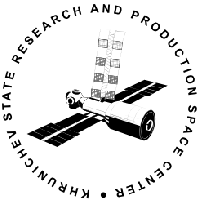Raduga 28
Launch Success
Liftoff Time (GMT)
11:41:00
Thursday December 19, 1991
Mission Details
Launch Notes
Last flight made by the Soviet Union before its dissolution. The Soviet Union was the first space power in history, having placed the first satellite, the first man and the first woman in orbit. It made the first EVA by a man and a woman, launched the first probes to land on Venus, the Moon and Mars, built the first space station in history, and the only automatic space shuttle. It has made Plesetsk the world's leading launch base in terms of launches, and Baikonur the second. The Soviet Union is the country that launched the most rockets in the world, still today, with a total of 2 447 flights.
Raduga 28
At the end of the 1960s, the USSR had small Strela satellites in low orbit and Molniya satellites in highly elliptical orbits to ensure its military telecommunications. The USA prefer to use the geostationary orbit. The OKB-10 begins in 1970 the development of a geostationary telecommunication satellite, named Raduga, which would be complementary to Molniya. A model of Raduga satellite is launched in March 1974. In July 1974, a modified Molniya satellite, Molniya-1S, is launched into geostationary orbit to test transmissions. The first Raduga satellite is successfully launched on December 22, 1975, but operates only for three months. The Raduga satellites are accepted in operational service in December 1979, after five test flights. The KBPM begins in 1985 the studies for a modernized version, called Raduga-1. A first unit is launched in June 1989 then, after two additional test flights, the system is considered operational. It is also developed an improved version Raduga-1M, which flown since 2007. Two other units are launched in 2010 and in 2013, then the operation of Raduga is ended. Raduga and Raduga-1 are very similar and are built on the KAUR-3 platform. The Radugas have a length of 5.5m, a diameter of 2.5m. The Raduga-1 have a height of 7,5m. The Raduga have a guaranteed life of one year, and the Raduga-1 of three years. They have an 11D78 motor system. It is made up of two identical blocks including each one a tank containing the two propellants and two 11D444 engines of 0,4N of thrust. The Raduga are the first satellites in the world to be stabilized on a geostationary position. This system also allows them to change position in geostationary orbit. Electrical power is provided by two solar panels from NPO Kvant. The Raduga-1M satellites are not based on the KAUR-3 platform, but are derived from the civil Ekspress AM satellites. They have a mass of 2600kg and a life span of ten years.
Geostationary Earth Orbit
1 Payload
2,000 kilograms
Rocket


Manufacturer
KhrunichevRocket
Height: 57.64m
Payload to Orbit
LEO: 19,000 kg
GTO: 2,400 kg
Liftoff Thrust
9,548 Kilonewtons
Fairing
Diameter: 4.35m
Height: 10.4m
Stages
4
Launch Site
Stats
Proton-K
198th
Mission
9th
Mission of 1991
Khrunichev State Research and Production Space Center
2475th
Mission
61st
Mission of 1991
1991
91st
Orbital launch attempt